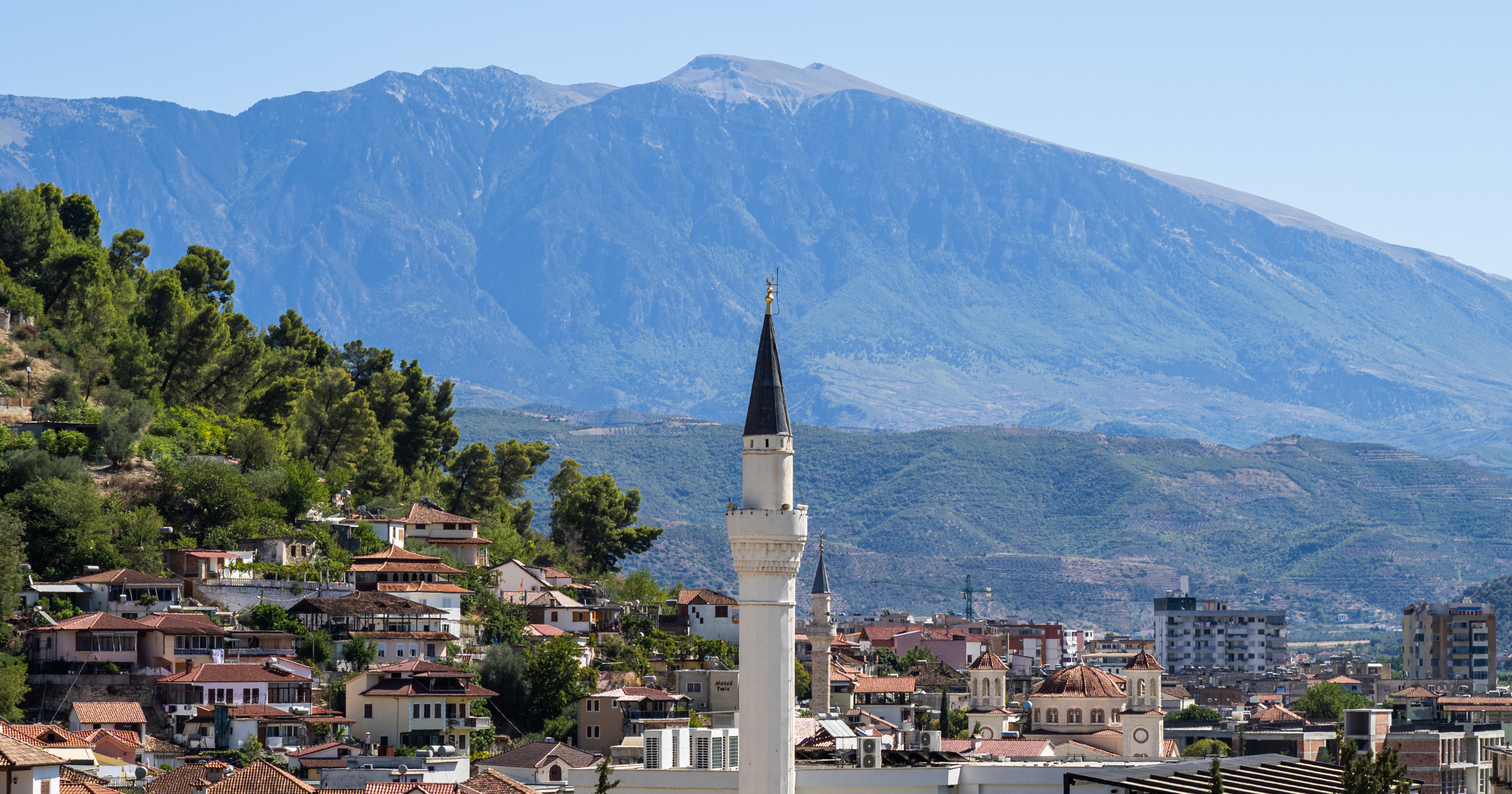
Travel photography is one of the most rewarding genres, as it allows you to use your image skills in new and exciting environments. But there is more to it than just creating vacation snaps. Here are some of my approaches to better travel photography during a recent visit to beautiful Albania.
## Understanding Travel Photography
Some types of photography are easy to define. When it comes to portraiture, wildlife, and landscape photography, we have a good idea of what to expect. Travel photography, however, is a broad topic and encompasses a wide range of genres. It can be a blend of landscape, portrait, street, documentary, and even abstraction, with perhaps a sprinkling of wildlife and still life thrown in.
Travel photography aims to convey a sense of a place that is otherwise unfamiliar to both the photographer and the viewer. The goal is for the photographer to come away with a coherent set or sets of photographs that give an idea of the place they have visited.
Of course, that idea will be restricted for three reasons. Firstly, a set of photos is always limited in its ability to represent reality accurately; it never fully captures the sounds, smells, tastes, or the feel of a place. Secondly, the photographer’s interpretation of the destination is influenced by their own personal life experiences and biases. Thirdly, in a typical visit that spans a week or two, one cannot fully get to know everything there is to know, let alone convey it in a series of pictures.
As with any genre, there are no hard and fast rules dictating what you must achieve in travel photography. It varies depending on the photographer’s personality and style. However, portraying the look and culture of a place is something most travel photographers strive for.
## Camera Equipment
I recently returned from a visit to Albania, and beforehand, I put a lot of thought into what gear to bring.
I shoot entirely with Micro Four Thirds cameras, so size and lightness were priorities. My equipment was well-suited for the trip. I packed my Olympus OM-5 Mark II with two professional lenses: the 12-40mm f/2.8 and the 40-150mm f/4. Both lenses are small and light enough not to become a hindrance, yet provide excellent image quality.
Instead of using the camera’s own strap, I opted for the Peak Design sling, which works perfectly with that camera body. I packed my gear in Cubes inside my hand luggage — a Peak Design Everyday Backpack. Two camera batteries proved more than sufficient; I only needed to swap the battery on one day.
Another reason for choosing these two lenses is that they share a 62mm filter thread. I took my Urth magnetic filters with me, though I ended up mainly using the circular polarizing (CPL) filter.
Additionally, I carried a carbon fiber Peak Design Travel Tripod with the intention of doing some nighttime photography in the mountains, but in the end, I did not use it.
## Getting to Know Albania
Before traveling, I researched the country’s safety and pinpointed the best places to visit for photography.
When traveling with camera gear, common sense is essential. In some countries, the value of an enthusiast’s gear could outweigh what a person earns in a year. For instance, when I lived in Tanzania 20 years ago, it was not uncommon for people to earn less than $1 USD a week. Even now, low earners in East Africa may make as little as $13 a week.
Thus, flaunting expensive cameras and lenses can make you a target for thieves in certain areas. However, although small and not a wealthy country, Albania has a lower crime rate than Canada. I always felt safe there; it is a highly welcoming country with a diverse mix of people from different religions living in harmony.
Sunni and some Sufi Muslims make up about half of Albania’s 2.7 million people, meaning their religion significantly influences the culture. The Muslim call to prayer, called the Ezani in Albanian, is especially tuneful and adds to the atmosphere of towns and cities. While this is a sound that cannot be captured in a still image, the essence of the religion is visually present.
Similarly, the Catholic and Eastern Orthodox Churches play crucial roles in Albanian culture, alongside other beliefs. On my very first day, a Buddhist Monk smiled at me in the street and walked over to shake my hand—a beautiful example of the country’s welcoming spirit.
## Please Be Respectful of the Places You Visit
As with traveling anywhere, when visiting mosques or churches, be aware of local cultural expectations, especially regarding clothing.
In some African countries, men wearing shorts are perceived as walking around in their underwear. In many places, it is not acceptable to enter religious buildings wearing shorts, and women are often expected to have their hair covered. Therefore, it is always best to research and respect the local dress code.
Sadly, not all tourists show such respect. In one Orthodox Church, multiple signs forbade photography, but some visitors ignored these rules, clicking away regardless. I kept my lens cap on and my camera slung over my shoulder out of respect.
When running photography workshops, I always emphasize that the photograph is secondary to the welfare of wildlife. The same principle applies to travel photography: protecting the natural environment, local people, culture, and infrastructure is far more important than any snapshot.
## A Bit About Albania’s Past
Albania has a turbulent history, particularly during and after World War II. It was invaded first by Italian Fascists, then by the Nazis. Interestingly, it was the only mainland European country during the war where the Jewish population grew because Albanians welcomed and hid them, regardless of faith—a profound lesson in humanity.
After the war, Albania endured years of oppression under an extreme communist-nationalist dictatorship, which fell along with the Iron Curtain.
Like many countries with similar legacies, Albania openly commemorates its dark past and deplores that period, which I will not dwell on here.
However, modern Albania is far removed from that history. It is a country of color and energy. Despite its busy cities, the urban areas are lush with greenery and feature wide open spaces. The people are proud of their country but celebrate their nationality with warm kindness and acceptance—an integral part of their national ethos.
Albania cherishes its rich traditions, but following the fall of its isolationist dictatorship, it has welcomed influences from its Mediterranean and North African neighbors without losing its own unique culture. This balance was one aspect I sought to capture in my photographs.
## Tirana and the Cities
My first impression of Albania was through its capital, Tirana.
It’s a hot, clean, busy city, perfumed somewhat with exhaust fumes. After decades of Albanians being denied motor vehicle ownership, the streets are now packed with cars, buses, and motorbikes. Additionally, bicycles and electric scooters weave through the traffic and pedestrians.
At first glance, the traffic seems chaotic, with no clear adherence to the rules of the road. Yet, helmetless travelers on two wheels mostly avoid collisions with cars and pedestrians. You must keep your wits about you.
Tirana is clearly a fast-growing city. Modern buildings tower into the skyline, dwarfing historic buildings and monuments. While some lament that these new structures overshadow the city’s Ottoman-era clock tower, I find the architecture complements the old. Many of the new buildings are painted in sun-washed pastel tones that harmonize with the tiled and cobbled streets.
Notably, a new 89-meter (292 feet) high-rise being finished in the city center resembles the bust of Albania’s national hero, Gjergj Kastrioti Skanderbeg. He was a 15th-century military commander who led a rebellion against the Ottoman Empire.
I also visited Shkodër, a quieter and more relaxed version of Tirana, with fewer cars and more respectful drivers at pedestrian crossings.
Meanwhile, Berat is a well-preserved historical city recognized as a UNESCO World Heritage Site. Its hilltop castle and the Ottoman Gorica Bridge offer fantastic opportunities for photography.
In contrast to the bustle of the cities, I spent a few days in the Accursed Mountains, also known as the Albanian Alps (Bjeshkët e Nemuna). These are the southernmost extension of the Dinaric Alps, which stretch from Italy.
The rugged, towering limestone and dolomite peaks, along with their deep valleys, make this landscape a photographer’s delight.
## The Albanian Sunshine
In summer, Albania is a hot country under baking sunshine. The golden hours are beautiful but last less than an hour.
The dust-filled atmosphere at the end of the day paints distant, hazy mountains a deep red in the dying light. Nighttime clears the air, making sunrises crisper.
There’s an old Noel Coward song, *Mad Dogs and Englishmen*, about going out in the midday sun. Being English, I had no choice but to head out while even the street dogs slept in the shade.
I appreciate the effects created by the strong reflections and harsh shadows, as they accurately reflect how the country appears most of the time.
Fortunately, my camera’s dynamic range coped well with these lighting conditions—even when photographing sunlight shining through a mountain waterfall.
On a couple of occasions, I used the camera’s HDR function, which brackets and merges different exposures. However, upon reviewing my images, I realized that was unnecessary. The raw files captured details in the shadows and highlights, even in challenging conditions.
## Camera Settings
For me, travel photography should never interfere with the experience of being in the country.
Most of the time, I don’t want to think too deeply about camera settings. I prefer a greater depth of field so the main subject appears alongside its surroundings, providing context.
Usually, I set one of the custom modes to aperture priority at f/9. ISO was set to auto with a minimum shutter speed of 1/250th of a second, fast enough to freeze people’s movement. Face and eye detection were enabled, which would override my small group of focus points located about one-third of the way up the frame.
I mostly shot in continuous autofocus but occasionally switched to single autofocus using the toggle switch on the rear of the camera.
I also dialed in +0.3 EV exposure compensation because the scenes were brighter than mid-gray, and without compensation, the camera would underexpose.
These weren’t the only settings I used, but having this as a starting point helped keep photography straightforward and enjoyable.
## Curating and Editing
Each of the four locations I visited was very different. For creating coherent collections, I will separate the images accordingly, although I have not done so here for this article.
I am just beginning to curate and develop the photos from my trip.
While I was away, raw development software updated to include support for my new camera.
Some mountain photos I plan to print; others will illustrate articles. Some will remain part of my personal travelogue.
## In Conclusion
Years ago, it was common for people to return from holidays and create albums or slideshows of their trips. Many would roll their eyes when asked to see them, but I found them fascinating.
I wasn’t usually interested in posed portraits but the life happening in the background of photos.
Of course, in Albania, I took some pictures of my wife who traveled with me, but the vast majority of my photos were attempts to capture the essence of the places we visited.
For me, that is what travel photography is all about.
https://petapixel.com/2025/10/18/how-to-elevate-your-travel-photography-beyond-vacation-snapshots/


